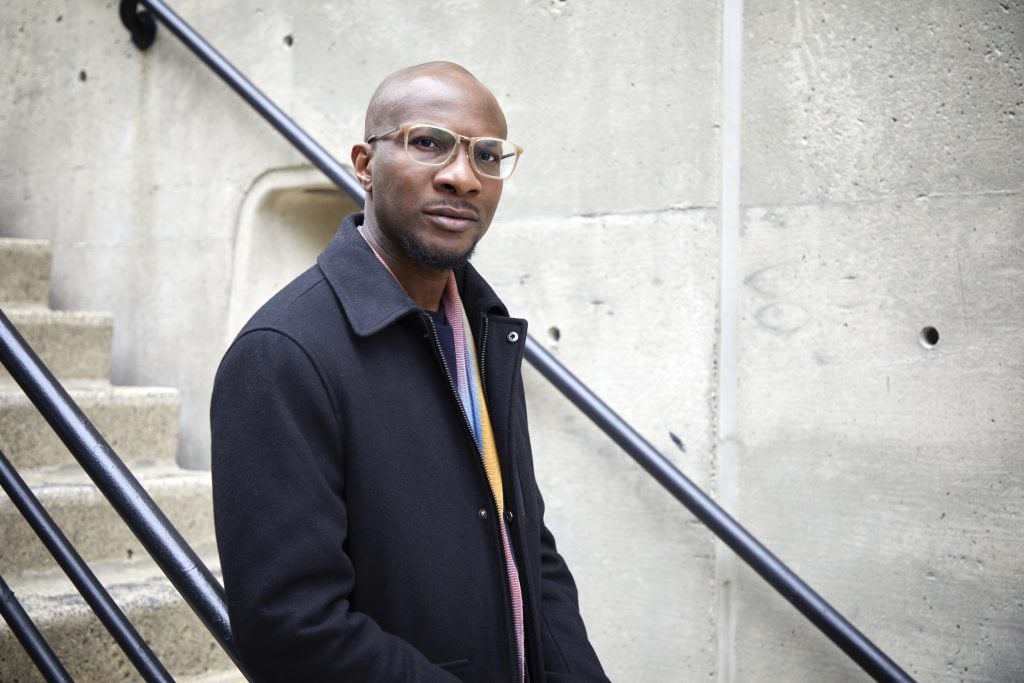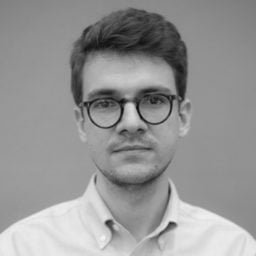A sauce-covered spoon resting in a white dish. A stainless steel pan filled with sprigs of thyme. A metal cake sheet showing signs of wear. These are scenes from the author and photographer Teju Cole’s kitchen in Cambridge, Massachusetts, where he teaches in the English department at Harvard University. But this could be your kitchen or mine. It is unfussy, cluttered, busy, used. Nothing has been arranged for these still lifes, which Cole photographed for his new book, Golden Apple of the Sun. The bowls, utensils, and fruits are just as he left them.
“Not arranging the things on the counter was, in a sense, about increasing the difficulty of the self-assignment,” Cole, a former photography columnist for the New York Times Magazine, told Artnet News. “I wanted the photos to have a kind of direct beauty, but to be vulnerable to chance.”
Chance: There is some precedent for it in his work. In Cole’s 2011 novel Open City, Julius, a disconsolate psychiatry fellow at a New York hospital, wanders the city seeking meaning in fortuitous encounters and small observations. A later Cole book, Blind Spot, which gathers 150 of his photographs taken in 20 countries, includes fragmented written reflections that wander, as if by accident, into the pictures.
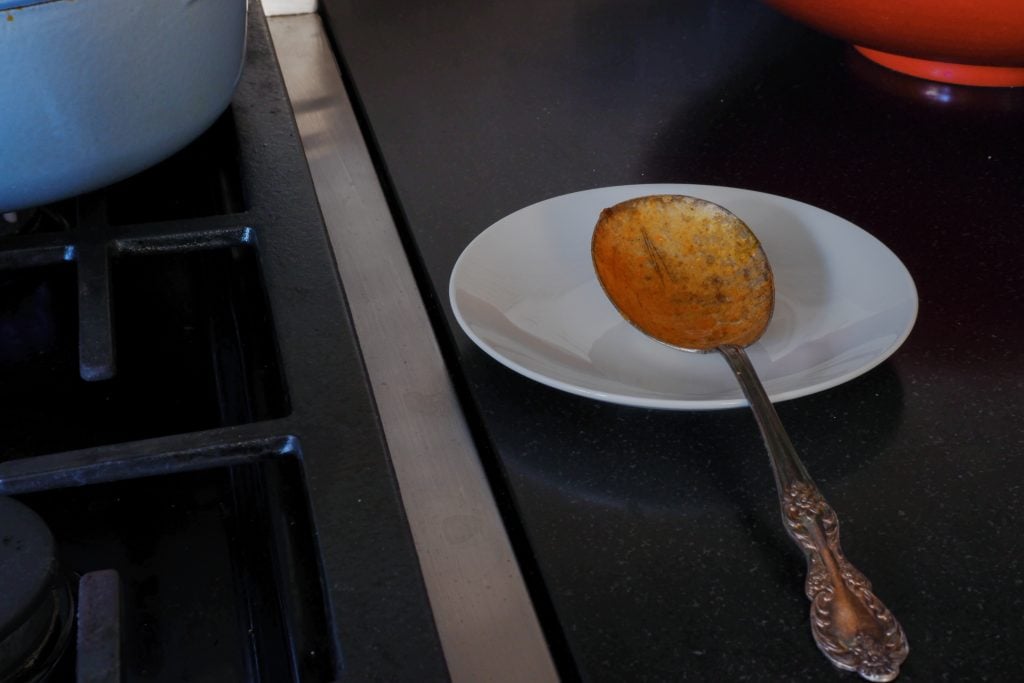
The photos in Golden Apple of the Sun capture the author Teju Cole’s kitchen just as he left it. Photo: Teju Cole.
Yet much of Cole’s writing is finely and deliberately structured. His essays and stories are often built not quite as nested narratives, but as mirrored ones, in which shards of thoughts and seemingly dispossessed episodes reflect into one another without ever blurring, so that each image and detail remains clearly intact while illuminating the others. In his 2014 essay “Unnamed Lake,” Cole recalls a sleepless night in which his agitated mind was “crammed with everything I had lately read of or seen”: the sinking of a passenger ship in Bangladesh, the U.S. bombing of Nagasaki, a Beethoven recital for the Nazi elite, each story confined to its own set of paragraphs, each grim episode foreshadowing the next.
Golden Apple of the Sun combines these two aspects of Cole’s mind—the one that daydreams and the one that builds—into a startling document. On the one hand, his photographs are a silent meditation on domestic life, a snapshot of Cole’s kitchen counter taken over the course of six weeks in the lead-up to the 2020 U.S. presidential election, and an attempt to draw meaning out of banality. On the other hand, the accompanying essay crescendos into a searing condemnation of America and its history of violence, and offers a grimly precise portrayal of the country in one of its saddest years, in which more than 375,000 people died amid an endless pandemic while political turmoil signalled darker days ahead.
We spoke with Cole about how the photographs and essay relate to one another, what images of spectacular violence can and cannot do, and why American landscape photographers have almost always ignored problems of dispossession.
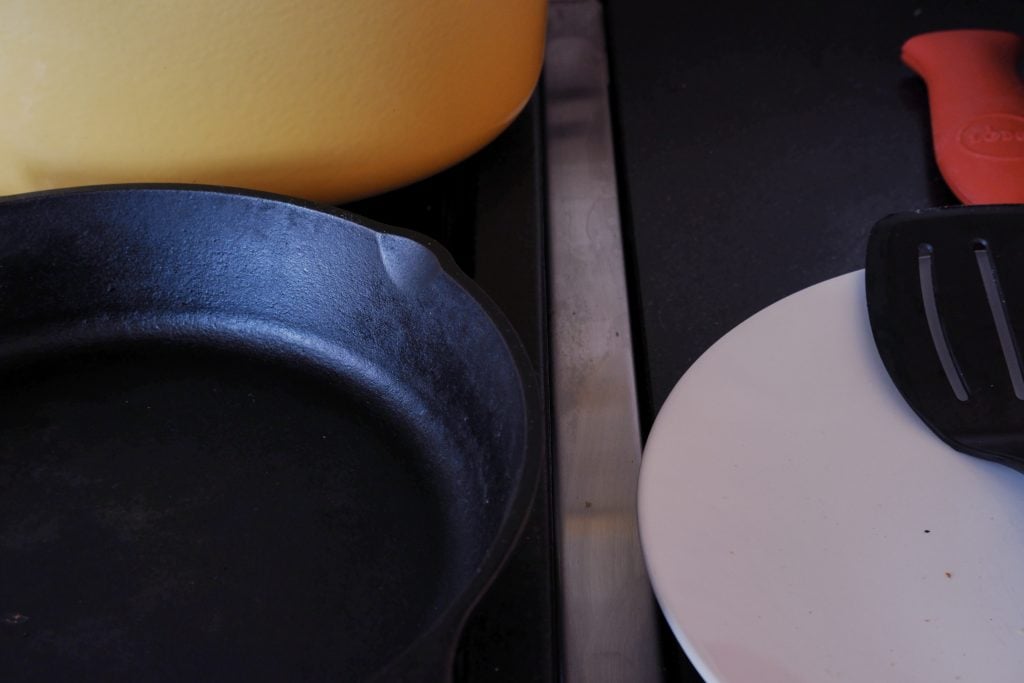
Unlike in his earlier photo books, for which he used a film camera, Cole shot the photos for Golden Apple of the Sun digitally. “Film isn’t better simply because it’s film,” he told Artnet News. “It also carries the risk of being nostalgic.” Photo: Teju Cole.
The still lifes in Golden Apple of the Sun were taken in one small space, your kitchen. But the accompanying essay moves broadly across time, place, and subject. Did confining your photographic eye encourage your mind to wander?
I think you’ve intuited the basic mechanism that was at work. My previous book [Fernweh] had been about Switzerland—in a sense, a small subject. But that project took me about four or five years. This [new one] was shot over the course of some very compressed weeks—under six weeks, with one kitchen counter. What it led me to was the assumptions we make about what photography is, and what it can do.
We tend to think that photography is eloquent, that it’s evidence. A picture’s worth a thousand words, they say. And these pictures are evidence, but that evidence has to be supported by what’s written.
So, if I say, “This picture was taken in Cambridge in October 2020,” that doesn’t tell you what it means for me to be a Black person in Cambridge in 2020, or what it means to be affiliated with Harvard, or the fact that there’s a pandemic, or that I’m cooking in my kitchen. All of that actually has to be said. It was almost as if the photos knew all those things, but I had to interpret them.
That reminds me of something you wrote in Blind Spot, about how, when we look at landscape imagery, “we don’t literally see the emotional landscape of individuals” who live or lived there, nor the “strain, the raw wounds, the inner fires burning, or the scars. What we do see, with some luck, is something that can work by analogy, as in the work of poets.”
That’s right. There’s that strange thing about writing, where what you write can outdistance you, or give you a clue for what to do next.
I think photography, unless it’s manipulated, is a kind of testimony from the real world. If I take a photograph of some plates with some fruit, that is as much a testimonial of the world as if I had gone out and photographed, say, people who are experiencing food insecurity, or people who are sick in a hospital.
However, if I photograph somebody in a hospital bed, people might think, “Aha! This tells us what things were like.” Except, does it really? It tells us what things were like for somebody who took a camera to a hospital. But I did not take a camera to a hospital. So what things were like for me was to be in my kitchen and to be left with my thoughts.
It’s almost an admission that even when photography’s not staged, very often your presence is staged. You don’t just happen to be hanging out in Afghanistan when a bomb goes off by the roadside. Your presence there is arranged.
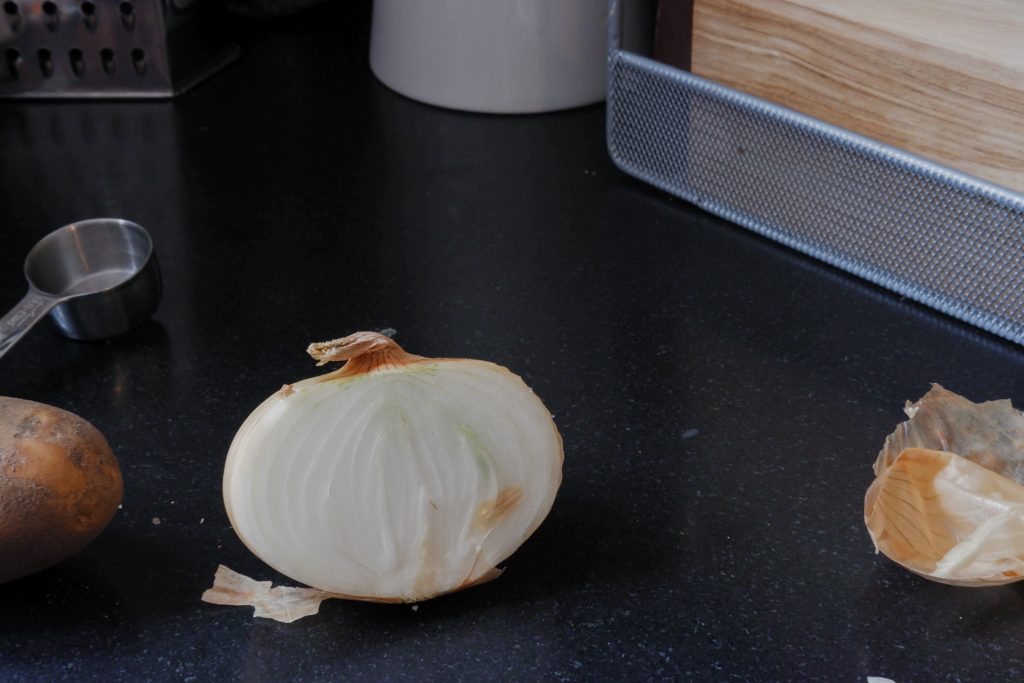
Each photograph in Teju Cole’s new book comes with a specific time stamp, indicating that each image is a marker of a specific moment past. This one was taken on October 25, 2020 at 1:26 p.m. Photo: Teju Cole.
So what can a quiet photograph of, say, your kitchen tell us about the year 2020 that a picture of the riot at the U.S. Capitol or a hospital ward cannot?
You know, as a student and critic of photography, I see all kinds of work, and some of it is quite impressive but it has no sustain. In the age of social media, we know what kinds of images can get thousands and thousands of likes. And we know those are not the images that are necessarily going to haunt us, or demand something more.
Photographs that are more nurturing, you look at and say, “Why am I being shown this?” If somebody has taken the trouble of photographing this, and printing it in a book or magazine, they must, on some level, think it’s worth looking at. But I cannot figure out why right away. In that gap is where I think something interesting potentially starts to happen.
So it matters how your work is made and seen. If you take a picture on your phone and put it on Instagram, that will necessarily be different than if you print it in a book.
That’s right. Context matters, because context is what determines protocols of attention. No matter our focus, if we see something on our Instagrams, we’re going to encounter it at a certain velocity. Even if we are patient, are we going to spent more than a minute on it?
Last night, I was looking at a book by Guido Guidi, a contemporary Italian photographer. He photographs, generally, the outskirts of Italian cities. He’s somebody I’ve learned a great deal from. And I was really spending three or four minutes with each photo. They were printed, I had a lamp on, the book was on my lap, and I wanted to figure out, Why am I being shown this? A lot of it is apparent ordinariness. He’s showing you a road, 15 miles outside Milan, where the city peters out and becomes the countryside. But that’s a testimony to Guidi’s excellence. If I was looking at it on a website, my admiration would be rushed.

The quietly cluttered images in the new book provide little evidence of the turmoil of 2020, which allowed Cole to look beyond the constraints of the moment. Photo: Teju Cole.
In an essay on war imagery, “Against Neutrality,” you write that “the problem is not one of too many unsettling images but of too few,” and that “we ought to see what actually happens… in situations of war or mass violence.” That essay was written in 2016. Since then, an argument has emerged that images of violence—especially violence visited upon Black bodies—are insensitive at best or exploitative at worst. Have your feelings on the issue changed at all since 2016?
For me, it has always been a paradox. Over the course of the years I was doing the photography column for the New York Times Magazine, I kept coming back to the question: What does it mean to be just when we are showing the pain of others? What does justice look like?
I rest inside the paradox. I recognize that most photojournalists in disaster zones are not doing it out of love for the specific people in that place. Many of them say they’re doing it out of a higher calling. It’s possible that’s true. I think very often it’s not true. I think it’s an excuse. I think they do it for glory. I think they do it for some of the same reasons soldiers do what they do: Just to be out in the world doing stuff that can be admired inside their own countries. I’m not really into seeing “amazing” photos pop up on my timeline, and people immediately saying, “Wow! This one will definitely win a Pulitzer. Congratulations!” It could literally be an image of a mother and her child fleeing from Border Patrol. Why do you think congratulations is the right word?
So that’s one side. On the other side, life is painful. Emmett Till’s mother said, I want this to be seen. As grotesque as it is, let us sit with this. Let us look at this and think about this. That’s where the paradox is. Who is making it? Who is asking it to be seen, in what context, and to what end? An image never sits alone.
This question may be so broad as to be disingenuous, but in what kinds of situations does it matter who takes a picture? That’s obviously a big part of the international conversation we’re having about who speaks on whose behalf.
I don’t think it’s disingenuous at all. I think it’s one of the central questions we have to think about and honestly deal with. I think one feature of right-wing politics is to always hearken back to a golden age that is presaged on a feeling of innocence. And one of my fundamental political commitments right now is to disavow that collective sense of innocence. We’re not blameless.
Photography has always insisted on its own neutrality. With literary studies today, you don’t just take the text at face value. You ask, “What structures of domination might sustain this?” Photography has not wanted to do that. When we look at 19th-century photographs, we talk about technique, or how innovative the photographer was, or how much money it got at auction. We don’t say, “What is sustaining all this activity?” If you’re looking at a port in a French city, what is being shown? What are they doing at this port? What is coming in? What’s at the port on the other side of the world?
You can have journalism that actually interrogates what’s happening, but the photographs end up reproducing the same old tropes. Like everybody else that’s been educated in photography, some of the people I admire the most are people who went out West on the great American road trip and took photos. Robert Frank’s The Americans is obviously a masterpiece. But there is no such thing as an innocent photograph of the American landscape.
So if you ask me a broad question like, “Does it matter who took the photo?” I’ll take you to a narrow question about a given photo by an American master of the Western landscape. I’ll ask, “What does this person think the landscape is?” It’s amazing the extent to which the vast majority of landscape photographers don’t touch questions of dispossession. Their historical consciousness is either, “This is beautiful, this is manifest destiny”—that’s Ansel Adams—or, on the flip side, you have Robert Adams, whose work is about the paradise we were given being spoiled by tract housing. To a man, great photographers. I love their work. Some of them I even revere. What I don’t sense is an awareness that this is a terrain of pain for the people whose home this originally was.
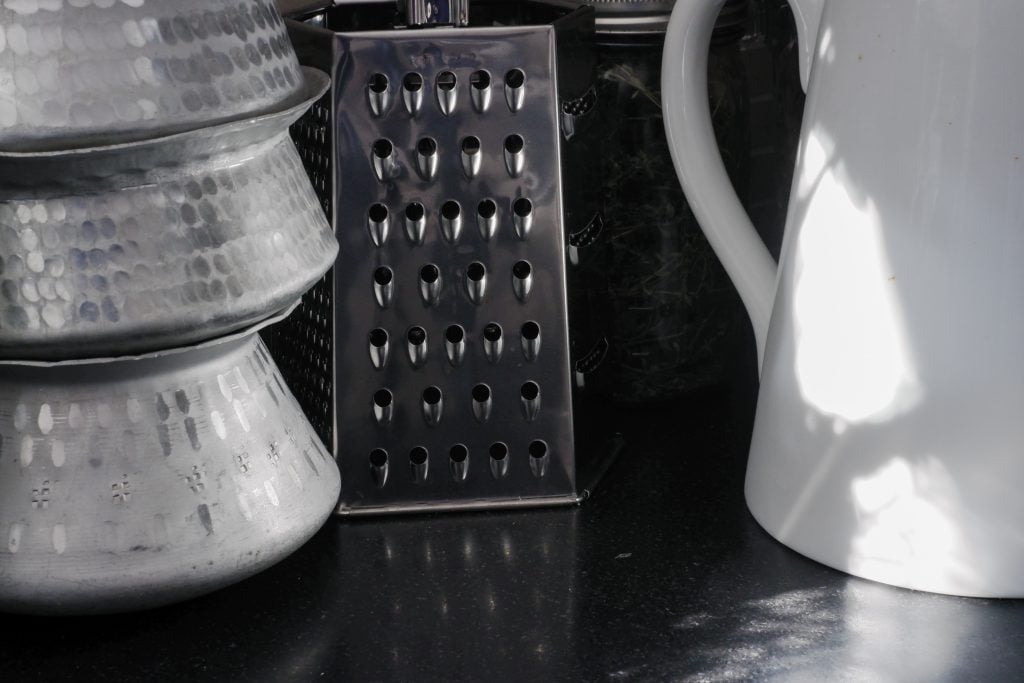
Several sections of Golden Apple of the Sun survey America’s prolonged history of violence. And though most of the photographs do not suggest brutality, this picture of a grater hints at the many tools of savagery. Photo: Teju Cole.
That brings me to another question, about the sense of restrained rage I picked up from the essay in Golden Apple of the Sun. I think you have that in a lot of your writing. How difficult is constraint these days, and what is its purpose?
Well, I hope you found the writing beautiful.
I did. It’s my favorite thing I’ve read of yours, especially in how you hid the structure so elegantly. Clearly, there is a very strong scaffold there, but it’s invisible. You just read right through it.
Thank you so much. One tends to favor the most recent work, so it’s always nice when people agree.
I think it comes back to this: Some of the old ways don’t necessarily serve us so well. I don’t want my whole existence to be a raised fist against injustice. Black Lives Matter. Yes, they do. And now I have to get back to my desk and make something that lasts. I think that’s the role that constraint plays.
How do I write in such a way that it can bear a repeated reading? How does it locate sources of pain beyond what’s simply obvious? It’s about allowing not only rage, but also sorrow. This is a sorrowful moment in our collective histories. People say there’s no ethical consumption under capitalism. Okay, agreed. And then, after saying that, we still have to enter the kitchen and make food. We’re being asked to do something intolerable, to witness and understand other people’s pain, and then still move on with life. It’s very difficult to do, and yet it has to be done.
